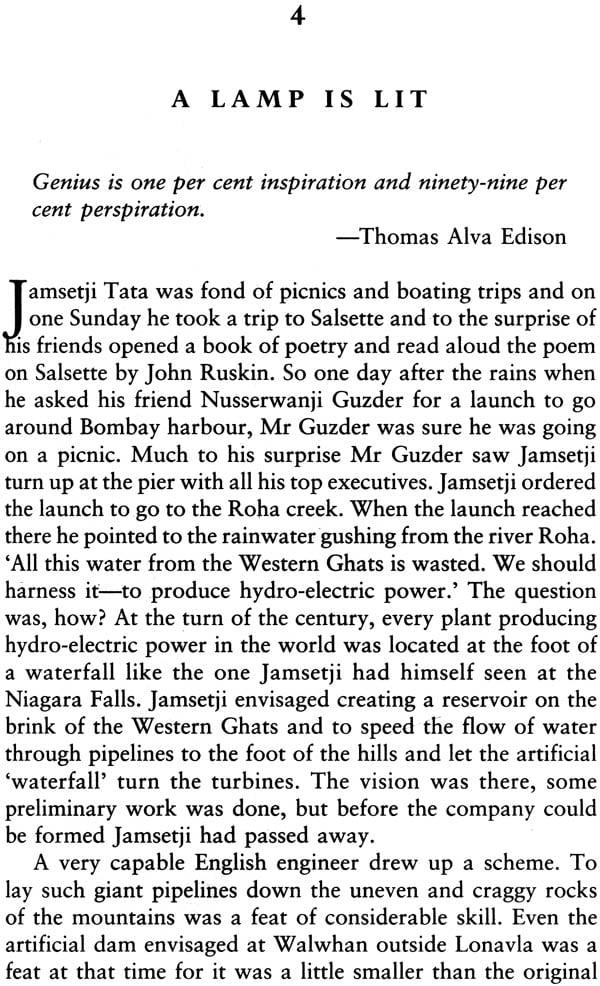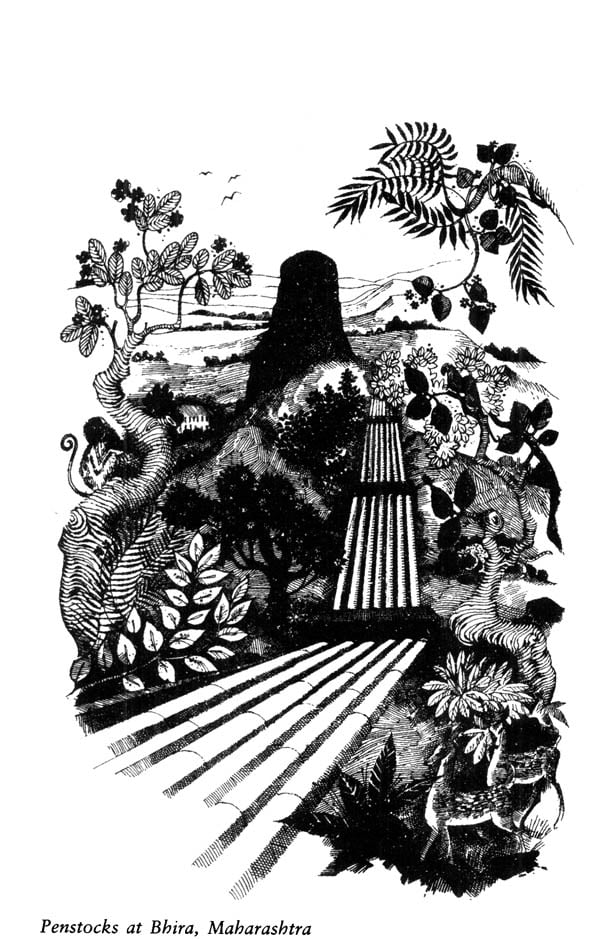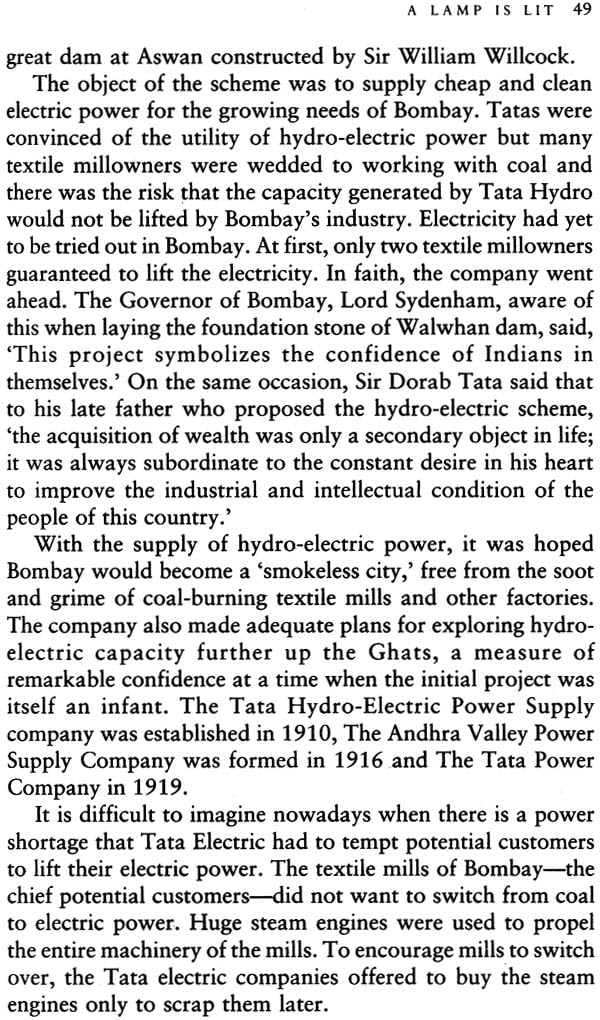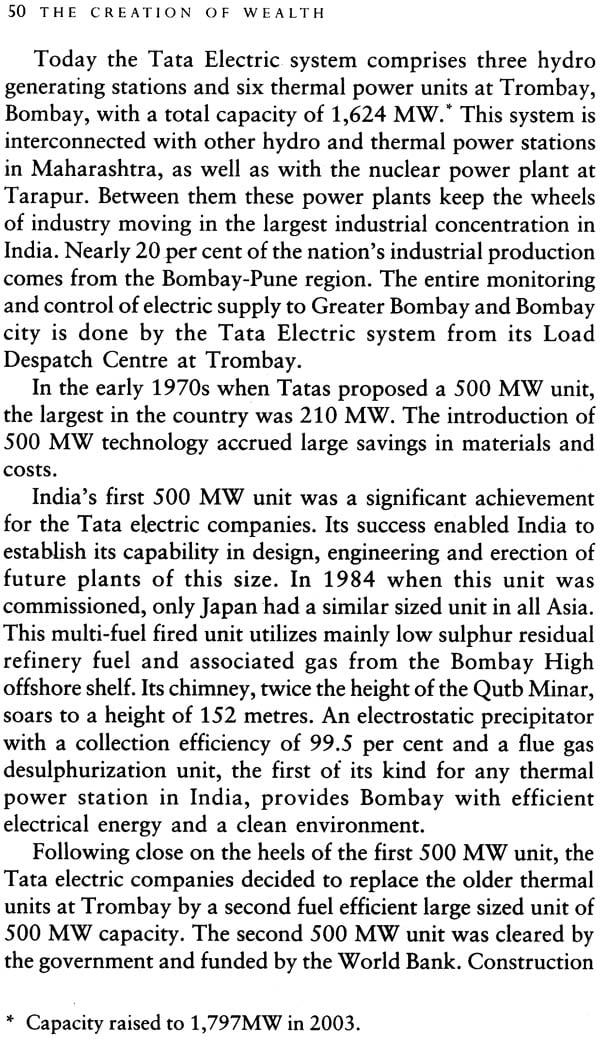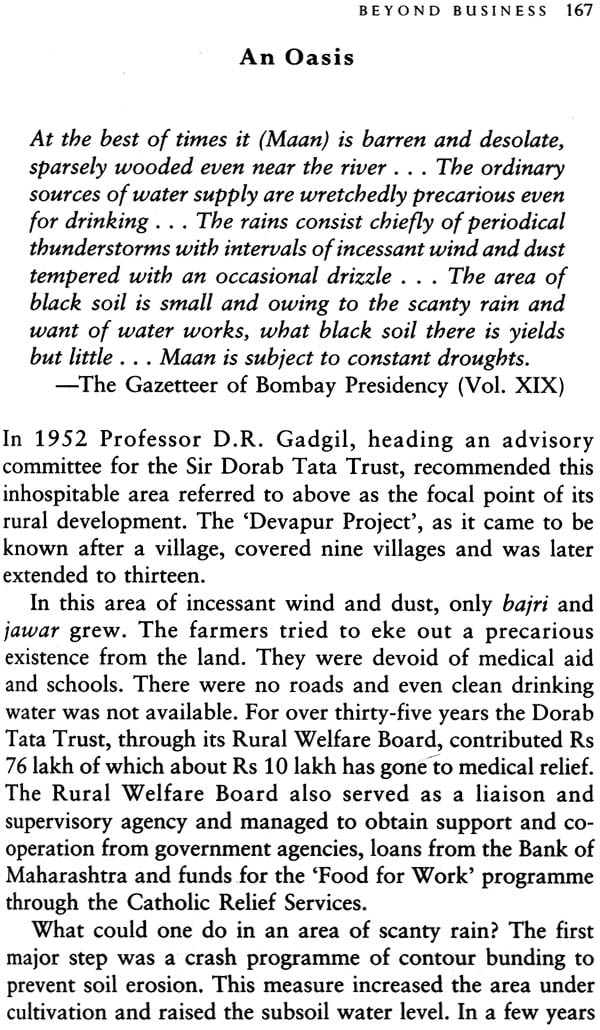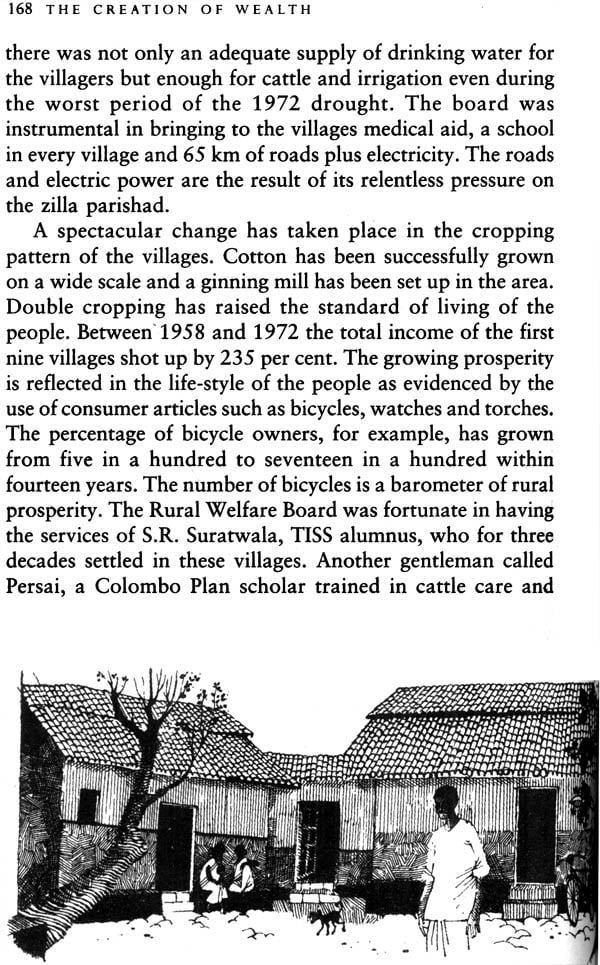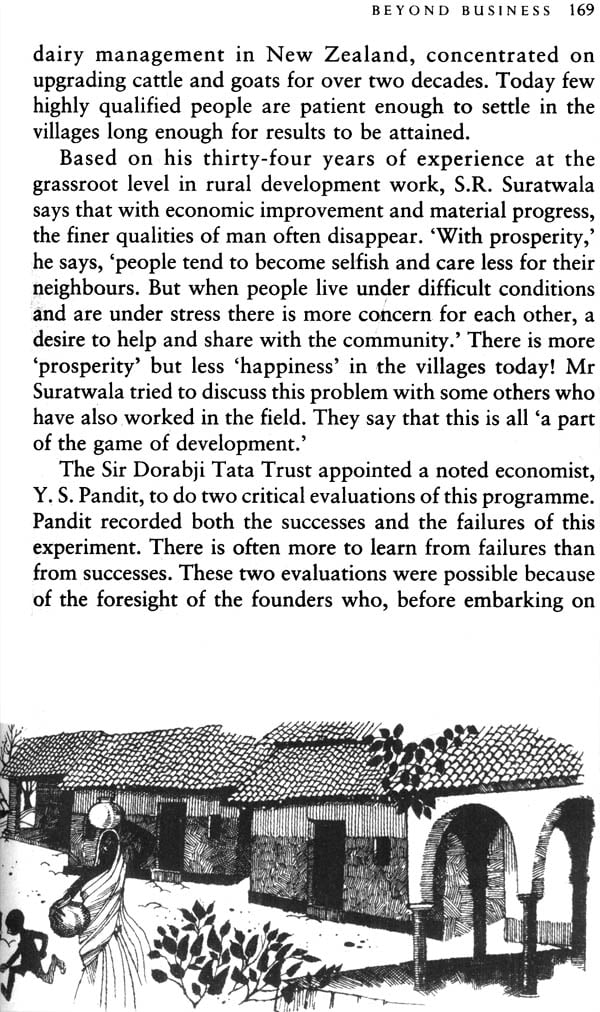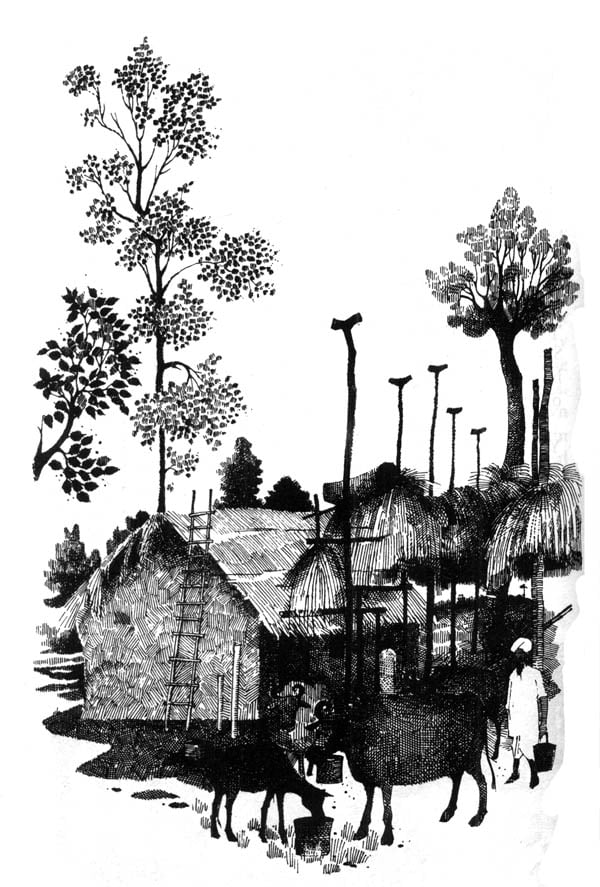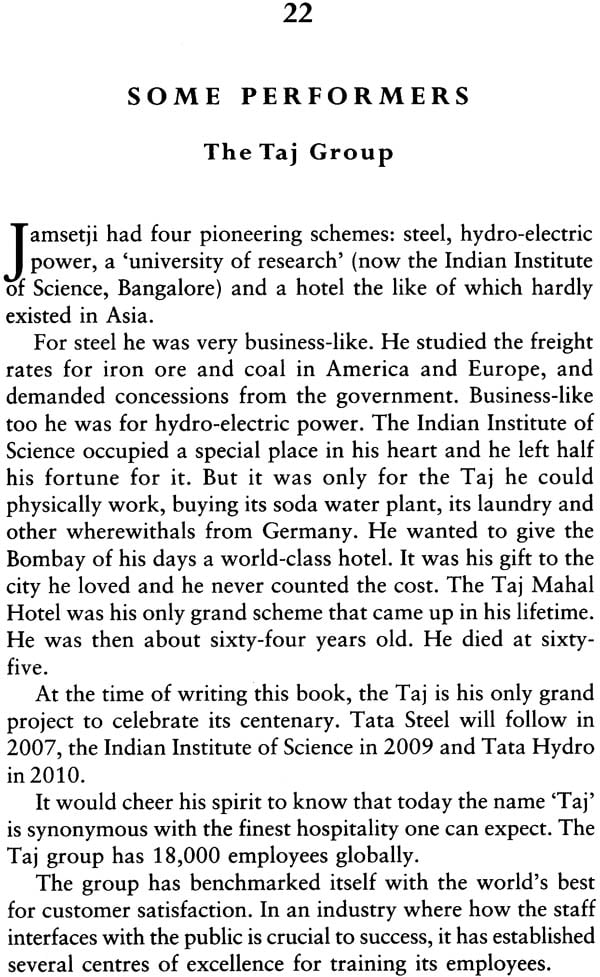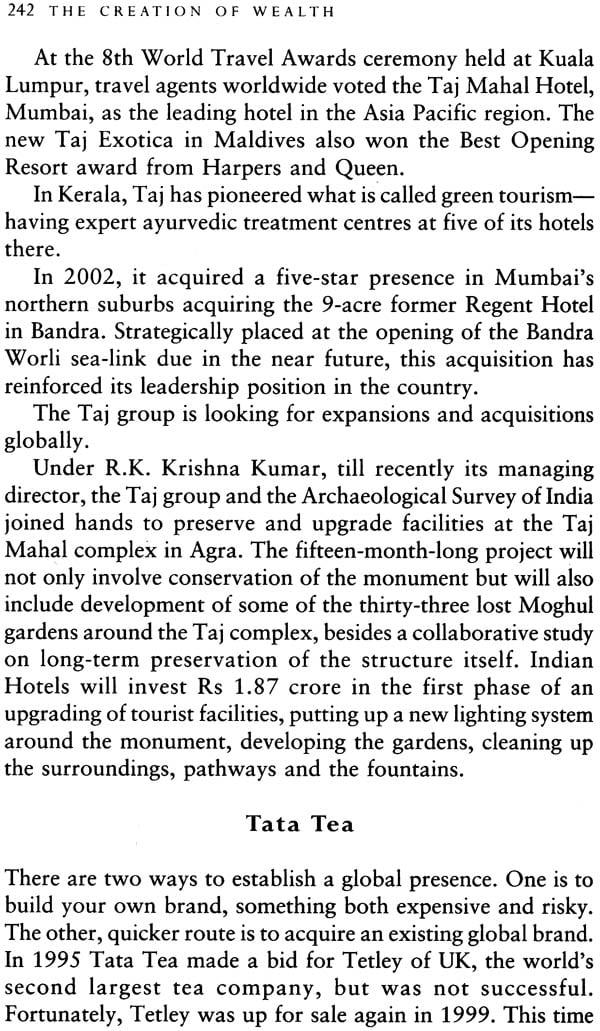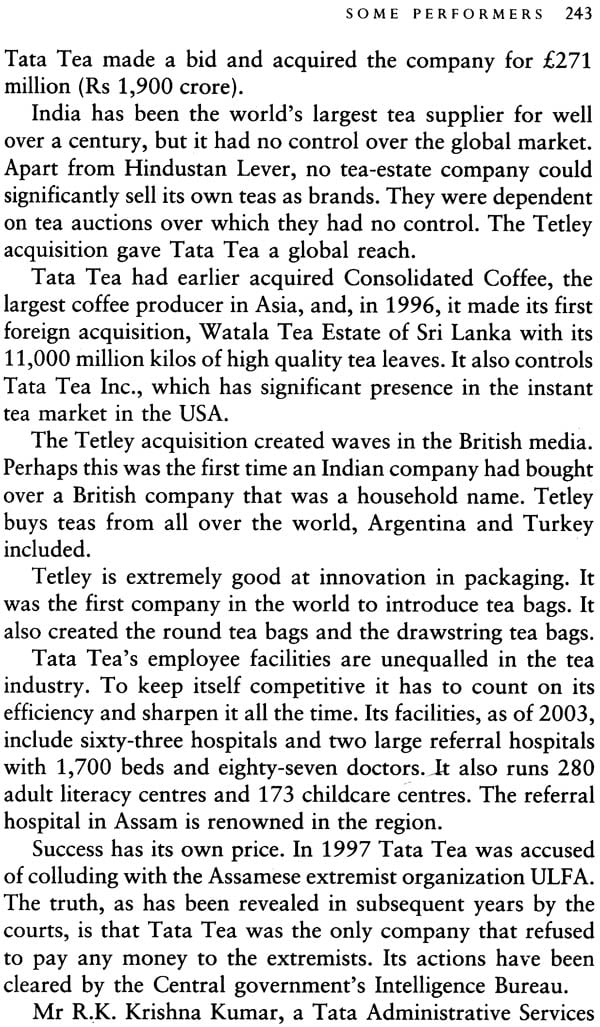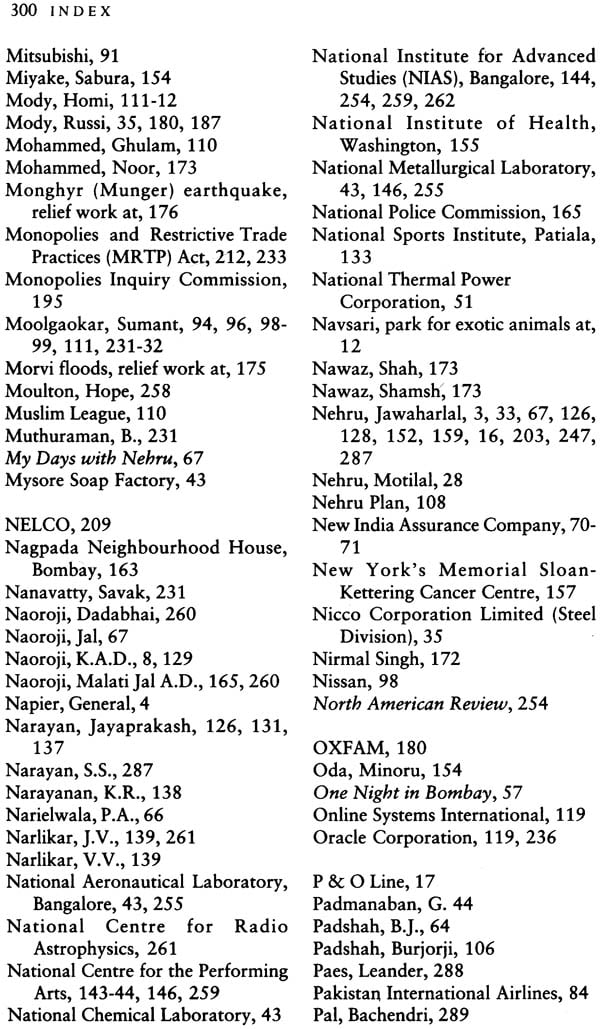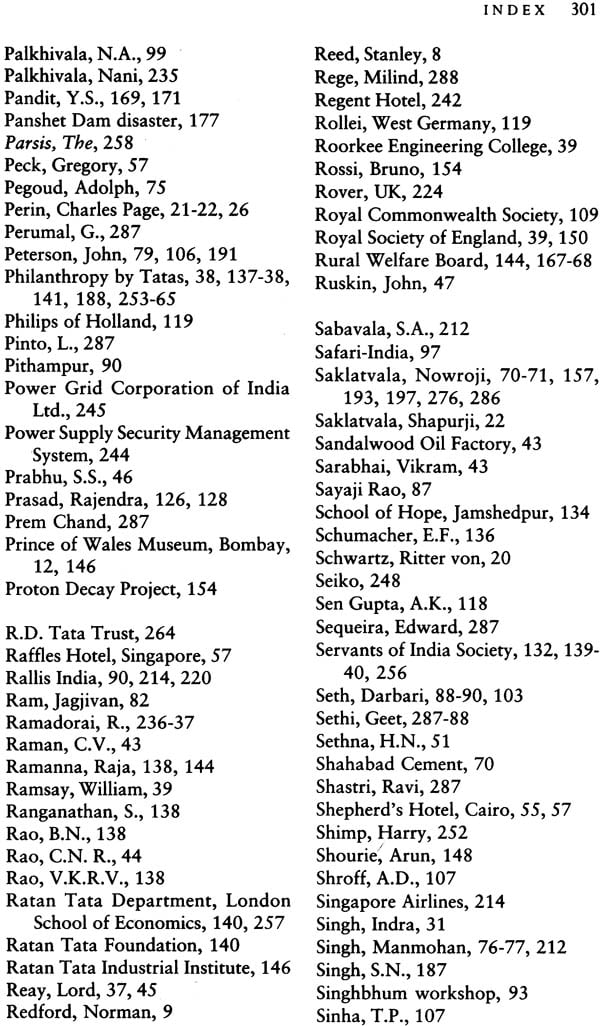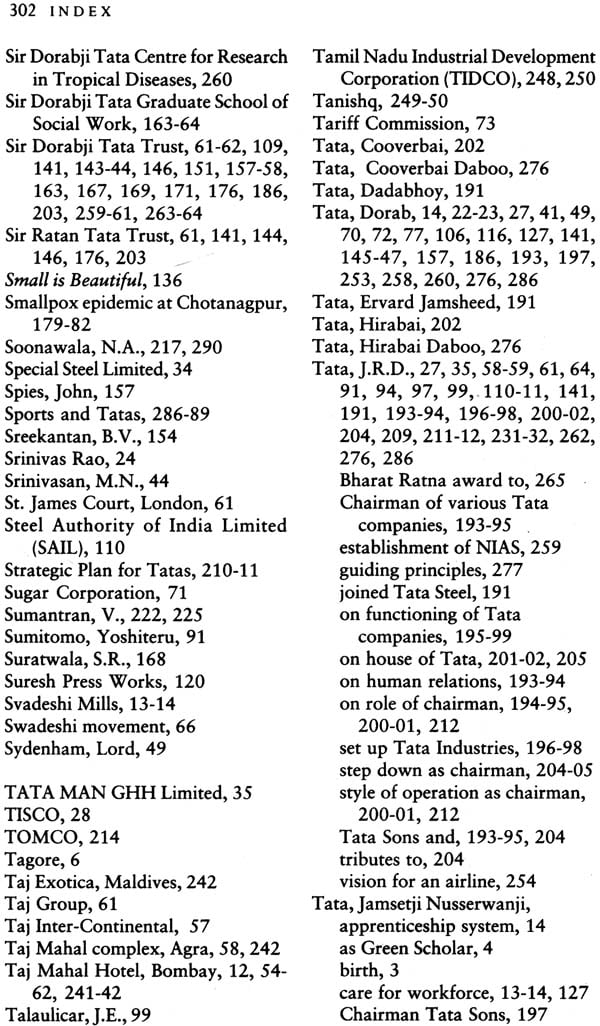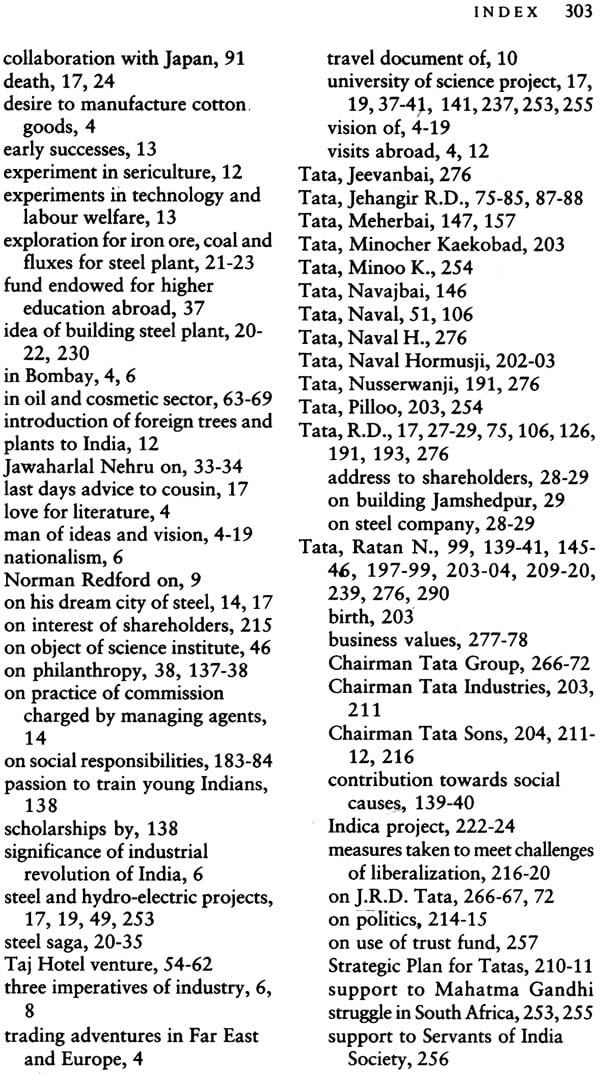
The Creation of Wealth (The Tatas from the 19th to the 21st Century)
Book Specification
| Item Code: | NAG432 |
| Author: | R.M. Lala |
| Publisher: | Penguin Books India Pvt. Ltd. |
| Language: | English |
| Edition: | 2004 |
| ISBN: | 97801430662240 |
| Pages: | 340 (51 B/W and 1 Color Illustrations) |
| Cover: | Paperback |
| Other Details | 8.5 inch X 5.5 inch |
| Weight | 350 gm |
Book Description
About the Book
When Jamsetji Tata stared a trading firm in 1868, few could have guessed that he was also opening an important chapter in the making of modern India. Jamsetji swa that the three keys to India's industrial development were steel, hydroelectric power, and technical education and research. A century and a half later, the Tatas can claim with justice to have lined up to the vision of their founder.
But the road to success has never been smooth. This edition includes the story of how the Tatas, with Ratan Tata at the helm, have had to grapple with change in the post-1992 era of economic reforms. In a frank epilogue, including resistance from his colleagues. The opening up of India to the world came as both a challenge and a blessing. This new edition also includes a postscript intoducing what has perhaps given the most global prominence to hte Tata brand, the Nano.
The Creation of Wealth is R.M. Lala's best-selling account of how the Tatas have been at the forefront in the making of the Indian natin-not just by their phenomenal achievementsas industrialists and entrepresneurs but also by their signal contributions in areas like factory reforms, labour and social welfare, medical research, higher education, culture and arts and rural development.
About the Author
Russi M. Lala started his career in journalism in 1948 at the age of nineteen. In 1959 he became the manager of the first Indian book publishing house in London and in 1964 he founded (with Rajmohan Gandhi) Himmat Weekly, which he edited for a decade. His first book, The Creation of Wealth, was published to critical and commercial acclaim. in 1981. This was followed by other books, including Beyond the Last Blue Mountain: A Life of J.R.D. Tata (1992), Celebration of the Cells:' Letters from a Cancer Survivor (1999), A Touch of Greatness: Encounters with the Eminent (2001) and For the Love of India: The Life and Times of Jamsetji Tata (2004). R.M. Lala's books have been translated into other languages including Japanese. He was the director of Tata's premier Trust, the Sir Dorabji Tata Trust, for eighteen years. He is the co-founder of the Centre for Advancement of Philanthropy, and since 1993, it Chairman.
Mario Miranda, whose illustrations appear in the book, is one of India's most famous cartoonists and illustrators. His works have been widely exhibited and published.
Introduction
Not many books are in demand twenty years after first publication. The Creation of Wealth is. First published in 1981, the last and the third edition was published in 1992. The book ended at a watershed for Tatas as well as for India, for in March 1991 Ratan Tata took over as chairman of Tata Sons, and in July the same year Manmohan Singh announced the policy of liberalization. In the intervening period between then and now, 2004, there has been a sea change in the industrial scenario from the world of controls to globalization.
The book was first written at a time of controls when the hangover of state capitalism was still there. The Creation of Wealth portrayed what private enterprise could do.
It is an account of how the foundation of India's industrialization was laid by Jamsetji and his heirs. The book evokes an era so different from today's business world. That was a world of adventurous men with undaunted hearts who dared to accomplish things for the sake of the country and not just the bottom line.
Their sights were set high; their gaze often distant. This book recalls Sir Dorabji Tata and party exploring for iron ore in Chanda District, central India, in a bullock cart, where tigers roamed and even their tea had to be prepared in soda water!
It is hard to imagine in today's power starved India that in the 1920s, Tata Hydro-Electric Company, in order to sell its power to mills, had to offer to buy their old boilers from the owners to convert the mills to electric power.
JRD launched civil aviation at a time when flying was a rich man's sport and he had the vision in 1932 that it would knit India close together. Later, he launched Air-India International as Asia's first international airline in 1948.
Tata Chemicals too had its romance of cracking the secret code of making soda ash which only a handful of companies abroad had the monopoly of. Soon thereafter, struck by years of drought and under cloud of a closure, it survived under the leadership of Darbari Seth, changing the water connections to sea water wherever possible and defying the prophets of doom that it would shut down.
We now live in prosaic times. It is not only industry that is changed; it seems men's motivations and circumstances have changed too.
A book is like a personality. It is of one piece When the economic scenario has drastically changed, to revise the contents of the 1992 edition would only serve to reduce the effectiveness of the pre 1992 narration. What I have chosen to do for the reader's benefit is to keep the original edition in Section A and added developments between 1992 and 2003 in Section B. In Section A I have deleted only two chapters from the original edition: 'A Little Leaven' and 'Tata Assets'. They are not only outdated but confusing in the context of 2004. I have, however, in the footnotes, updated essential statistics in the 1992 edition and only occasionally deleted a few lines. This procedure will make for smoother reading.
Section B covers the liberalization era 1992-2003.
'Liberalization: Challenge & Response' is a bridge-chapter that enables the reader to make the transition from the past to the present. It seeks to give only a broad picture of the Tata group's meeting the challenge of the changing scenario.
Significant developments of the decade 1992-2002 in select Tata companies are covered in the chapters in this section. The earlier edition gave facts that were known to me then. New facts have come to light in the last decade, especially on Sir Ratan Tata Trust. For Sir Dorabji Tata Trust I have updated briefly the developments of the last decade. (The chapter 'Tata Philanthropy: Vision, Compassion and Attainment' needs to be read along with the section Tata Trusts in 'Beyond Business' in the previous edition to get a more complete picture.)
I hope this arrangement will enable the reader to get an integrated view of the Tatas, capturing the romance of the early days as well as the challenges of the present and Tatas' response.
In 1991 JRD announced that the Tata Central Archives would be founded. The archives were inaugurated in the year 2000 by Ratan Tata. Located in Pune behind the Tata Management Training Centre, it portrays the history of Tatas which synchronizes with the industrialization of India. It has aroused the interest of many other companies who have benefited from its expertise. It has a magnificent exhibition hall and a replica of the office room of J.R.D. Tata.
Not only does a foundation have an endowment. A company too can endow itself with certain principles and values-or have none! Jamsetji believed in being fair to all stakeholders. He said in 1895, 'We do not claim to be more unselfish, more generous or more philanthropic than other people. But we think we started on sound and straightforward business principles, considering the interests of the shareholders our own, and the health and welfare of the employees the sure foundation of our prosperity.'
In 1924 when Tata Steel was at its lowest ebb with no money to pay the workers Sir Dorabji Tata risked his entire personal fortune of Rs 1 crore (about Rs 90 crore of today) to get a loan from the State Bank of India for a public limited company to save the name of Tatas.
In 1979 when I started writing The Creation of Wealth, in reply to a question J.R.D. Tata observed: 'What would have happened if our philosophy was like that of some other companies which do not stop at any means to attain ends ... If we were like other groups we would be twice as big as they are today. What we have sacrificed is a 100 per cent growth,' and firmly he added: 'But we wouldn't want it any other way.' Perhaps it is relevant to give only two instances at this point.
In 1967 Darbari Seth of Tata Chemicals at Mithapur prepared a unique fertilizer project related to the resources and needs of India that would ultimately have culminated in a solar-cum-nuclear power agro-industrial complex. The Prime Minister, Indira Gandhi, flew to Mithapur for a presentation of the project, which appeared to thrill her by virtue of its conceptual grandeur and the vital role it would play in India's development. Unfortunately, some people around her objected to supporting Tatas.
In subsequent years the imports of fertilizers went up from a few hundred to a few thousand crores. Foreign companies benefited and Indian enterprises did not! Who lost more Tatas or India? Some indication of the loss to India is from our import figures of fertilizers:
1975-76 Rs 592 crore
1985-86 Rs 1436 crore
1995-96 Rs 5628 crore
In 1960 Mercedes-Benz were so pleased with the quality of production of their trucks in India that they were willing for Tatas to manufacture the Mercedes-Benz 180D model in India. Sumant Moolgaokar, the builder of Telco, told the author in 1960, 'I gave keys of six Mercedes-Benz cars to K.B. Lal and told him that you use these six cars for one year and at the end of it you can decide whether you want to give us the permission to manufacture it.' Mr Moolgaokar added that one of these cars was used by Krishna Menon. A year later the six keys and cars were delivered back to Tatas. It seems there was no reply from the government.
Contents
| Acknowledgement | xiii | |
| Introduction | xv | |
| Section A-1874 to 1991 | ||
| Foreword | xxv | |
| Preface | xxix | |
| Part One-The Spirit of Adventure | ||
| l. | The Man and His Vision | 3 |
| 2 | The Steel Saga | 20 |
| 3 | Impulse to Learning | 37 |
| 4 | A Lamp is Lit | 47 |
| 5 | The Taj Mahal | 54 |
| 6 | A Breath of Fragrance | 63 |
| 7 | Those Mad, Mad Days | 70 |
| 8 | Wings for a Nation | 75 |
| 9 | Treasures from the Sea | 85 |
| 10 | The Cult of Excellence | 91 |
| 1l. | Cup of Awakening | 100 |
| 12 | Dreamers and Performers | 106 |
| Part Two-Ripple Effects | ||
| 13 | On Industry | 115 |
| 14 | Beyond Business | 137 |
| 15 | On People | 172 |
| 16 | Creating a New Industrial Culture | 183 |
| Part Three-The Facts | ||
| 17 | How Do Tatas Function? | 191 |
| Section B-1992 to 2003 | ||
| 18 | Liberalization: Challenge & Response | 209 |
| 19 | Dramatic Turnarounds | 221 |
| 20 | Planning Ahead for Success | 229 |
| 21 | Growth Points for the Future | 233 |
| 22 | Some Performers | 241 |
| 23 | Tata Philanthropy-Vision, | 253 |
| Compassion, Attainment | ||
| Epilogue | -266 | |
| Postscript: Nano and All That! | 273 | |
| Appendices | ||
| A | Tatas at a Glance | 279 |
| B | Chairmen of Tatas from 1887 | 280 |
| C | J.R.D. Tata-Guiding Principles | 281 |
| Ratan N. Tata""-My Business Values | ||
| D | Key Business Sectors and Tata | 283 |
| Companies | ||
| E | Firsts in Labour Welfare | 288 |
| F | Tatas and Sports | 290 |
| G | Directors of Tata Sons Limited | 294 |
| Index | 295 |
